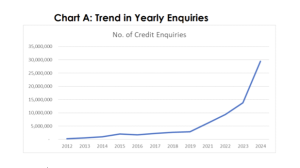
… warns recapitalisation efforts “meaningless” otherwise
By Joshua Worlasi AMLANU
The domestic banking sector could strengthen its capital base and cut high non-performing loan (NPL) ratios if government ring-fences and repays billions in legacy debt owed to contractors, service providers and independent power producers (IPPs), according to a new policy paper.
The study, by banking consultant Dr. Richmond Atuahene, warns that persistent arrears, coupled with macroeconomic instability, continue to keep NPLs well above the 10 percent threshold considered acceptable in global banking.
Data from the Bank of Ghana (BoG) show that the NPL ratio stood at 23.6 percent in April 2025, down slightly from 25.7 percent a year earlier but still far from the central bank’s target of reducing it to 10 percent by December 2026.
The paper calls for urgent repayment of GH¢35billion – around 5.8 percent of gross domestic product (GDP) – for non-energy sector debt and US$1.6billion, or 2.8 percent of GDP, energy sector arrears.
Without this, Dr. Atuahene argued that any recapitalisation would be “meaningless”. He also urged the Ministry of Finance (MoF) to ring-fence the debt and agree on fixed monthly repayments to clear the backlog.
Much of the banking sector’s NPL problem stems from a mix of government arrears, weak economic conditions and poor credit risk practices. The study notes that high inflation, currency depreciation and elevated interest rates over the past decade have eroded borrowers’ repayment capacity.
Sector data show agriculture has the highest NPL ratio at 62.1 percent followed by transportation at 53.9 percent, while mining has improved to below 10 percent.
The apex bank’s plan to cut NPLs includes stricter loan restructuring rules, faster collateral recovery, stronger credit risk governance and tighter lending controls for repeat defaulters.
Governor Johnson Asiama has described the measures as part of a broader effort to “restore asset quality and safeguard stability”.
Dr. Atuahene’s paper – drawing on IMF and central bank data from 2014 to 2024 – found that NPLs have averaged over 17 percent during the past decade, with peaks above 22 percent in 2017. This period included the 2017-18 banking crisis, 2022-23 domestic debt exchange and prolonged fiscal deficits.
Beyond debt repayment, the report recommends independent asset quality reviews by international firms, stronger governance in banks, improved internal controls and tighter credit assessment standards. It also suggests that banks with high NPLs be subjected to more frequent regulatory reporting and on-site supervision.
The study cautions that state involvement in the sector, coupled with gaps in supervision and insolvency frameworks, has amplified systemic risk.
“Unless these structural weaknesses are addressed alongside debt clearance, NPLs will continue to threaten both solvency and growth,” Dr. Atuahene said.
While BoG is transitioning to Basel III and IV capital standards, the report notes that flexibility in applying capital requirements may be needed to absorb losses from bad loans.
Effective credit risk assessment, early detection of borrower distress and stress-testing large exposures are cited as essential to sustaining profitability and stability.
The outlook, according to Dr. Atuahene, hinges on whether government follows through on arrears repayment, implements macroeconomic stabilisation and enforces robust governance in the banking industry. Without these steps, he added, high NPLs could remain an entrenched drag on the sector’s health.
The post Ring-fence legacy debt to protect banks’ capital – Dr. Atuahene appeared first on The Business & Financial Times.
Read Full Story
















Facebook
Twitter
Pinterest
Instagram
Google+
YouTube
LinkedIn
RSS